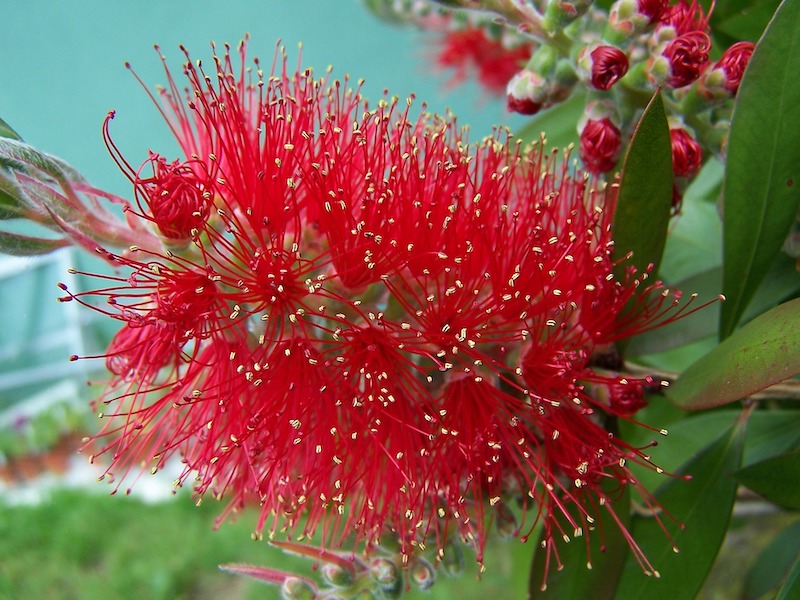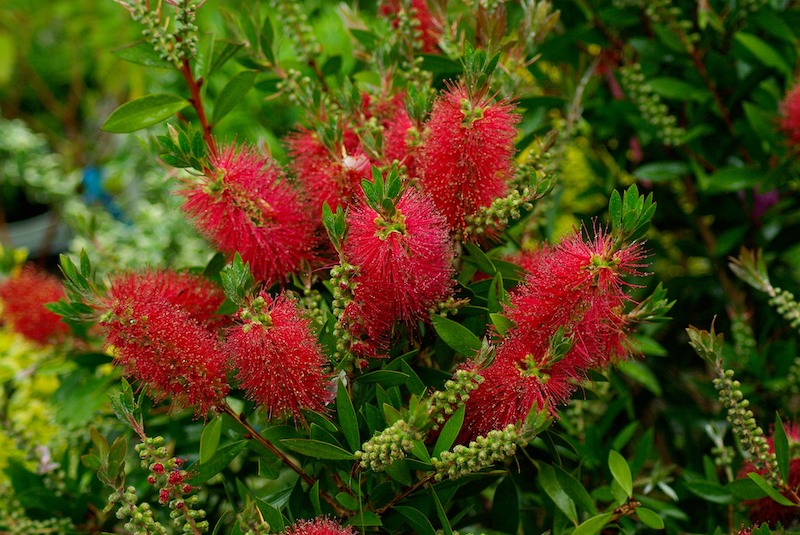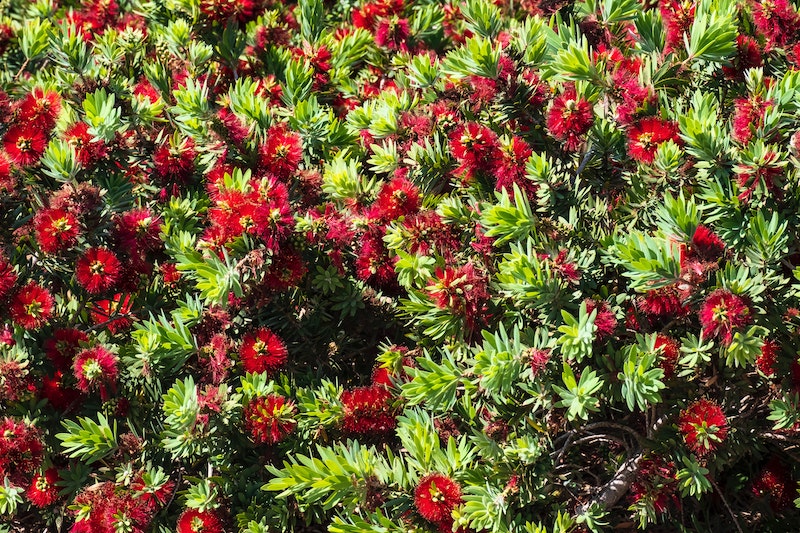Growing Bottlebrush
Bottlebrush (Callistemon) is a showy shrub native to Australia. It gets its name from the similarity between its blooms and the shape of a bottle-cleaning brush. Hummingbirds and other pollinators love their red, white, or yellow flowers that appear from spring through summer. The leaves on the bottlebrush are small and narrow, and can appear a silvery-green color.
Bottlebrush is heat and drought tolerant, and grows well outdoors in USDA Hardiness zones 8b-11. This low-maintenance plant can grow 3-15 feet tall and some varieties can even reach 25 feet tall. Its spread can be up to 15 feet in width.

Planting Bottlebrush
Full sun is required for the best growth of your bottlebrush plant. Provide these plants with at least six to eight hours of sunlight daily. Bottlebrush can survive in part shade, however, its flowers will be less abundant in shade. When digging holes for planting, use the mature width of the plant to determine the spacing, which will allow adequate airflow between plants.
Bottlebrush is not particular about soil types. Loamy, well-draining soil seems to yield the best results. Adding compost when planting will provide nutrients and aid in drainage. Apply a layer of mulch around the plants, avoiding contact with the trunk.
Watering Bottlebrush
Water your bottlebrush plants thoroughly each week until established. Water the soil so it is deeply saturated, and then allow it to dry between waterings. The low-maintenance bottlebrush is heat and drought tolerant when established. Avoid any buildup of standing water in the area. The soil should allow water to drain freely in order to avoid root rot. Avoid overhead watering and water at the base or use a drip line to reduce the chance of mildew.

Fertilizing Bottlebrush
This plant is easy to care for when it comes to fertilization. Bottlebrushes should not receive too much nitrogen-rich fertilizer. Instead, you should amend the planting site with compost. In the following years, you can topdress the root zone with compost in spring to refresh the soil. Too much chemical fertilizer will encourage an abundance of foliage at the expense of flower production. Instead, stick to topdressing with compost once each spring for best growth results.
Pruning Bottlebrush
Pruning your bottlebrush should be done in early spring or in the fall. Bottlebrush can be grown as a tree if pruned to one single trunk. This can be done by removing lower suckers periodically. Remove dead, sickly, or damaged branches as needed to maintain a healthy plant. Trim just above a node where new growth will emerge. Depending on how you choose to prune bottlebrush, it can grow as a shrub or a tree.

Caring For Bottlebrush in Pots
For planting bottlebrush in containers, use a general-purpose potting mix. Add a bit of horticultural sand to the mix to improve drainage. Choose a large pot about 16 inches in diameter with at least one good drainage hole.
Fertilize annually with compost instead of a chemical fertilizer, and do not feed during the winter. Keep your bottlebrush plant in a bright location that will receive at least 6 hours of sunlight daily. Water the container when the soil is dry. Move the pot indoors over winter, and return it to a bright location outdoors after the last frost.
Winter Care for Bottlebrush
These are heat-loving plants that do not live through harsh winters. Wrap the plant in burlap or cover it with a sheet to protect from any threat of frost. Plant bottlebrush in pots that you can move indoors if you live in a colder climate. Ensure that indoor plants still receive a few hours of bright sunlight daily. Move the pots outside again after the last frost in the spring. Or, if you live in zones 8-10, your plants should do fine with a thick layer of mulch around the root zone.
 |
Author Chris Link - Published 3-6-2023 |
